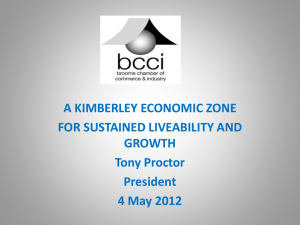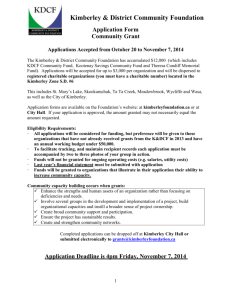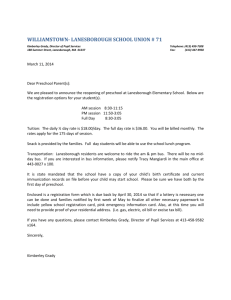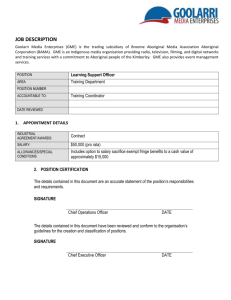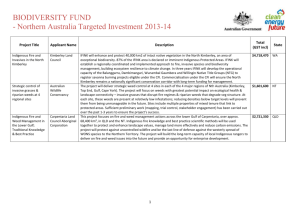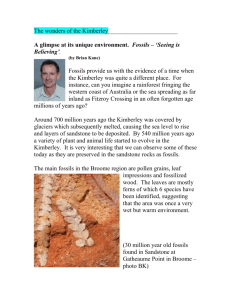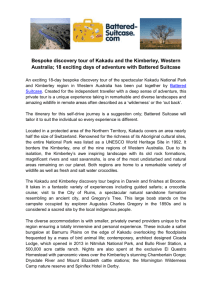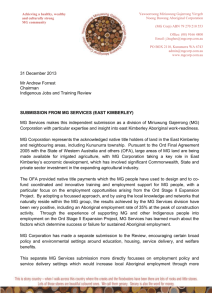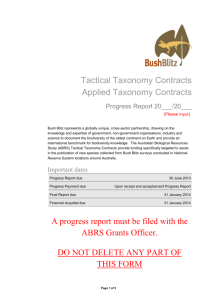The Kimberley region - Whalesharks of Ningaloo Reef
advertisement
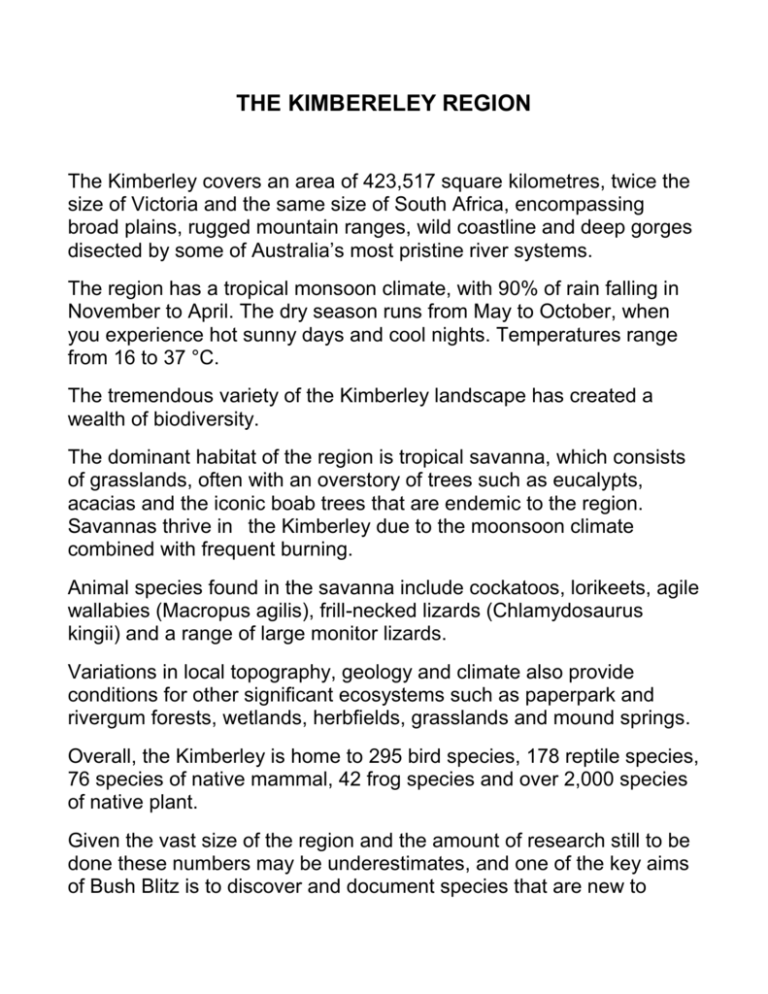
THE KIMBERELEY REGION The Kimberley covers an area of 423,517 square kilometres, twice the size of Victoria and the same size of South Africa, encompassing broad plains, rugged mountain ranges, wild coastline and deep gorges disected by some of Australia’s most pristine river systems. The region has a tropical monsoon climate, with 90% of rain falling in November to April. The dry season runs from May to October, when you experience hot sunny days and cool nights. Temperatures range from 16 to 37 °C. The tremendous variety of the Kimberley landscape has created a wealth of biodiversity. The dominant habitat of the region is tropical savanna, which consists of grasslands, often with an overstory of trees such as eucalypts, acacias and the iconic boab trees that are endemic to the region. Savannas thrive in the Kimberley due to the moonsoon climate combined with frequent burning. Animal species found in the savanna include cockatoos, lorikeets, agile wallabies (Macropus agilis), frill-necked lizards (Chlamydosaurus kingii) and a range of large monitor lizards. Variations in local topography, geology and climate also provide conditions for other significant ecosystems such as paperpark and rivergum forests, wetlands, herbfields, grasslands and mound springs. Overall, the Kimberley is home to 295 bird species, 178 reptile species, 76 species of native mammal, 42 frog species and over 2,000 species of native plant. Given the vast size of the region and the amount of research still to be done these numbers may be underestimates, and one of the key aims of Bush Blitz is to discover and document species that are new to science. The Kimberley is home to 22 Aboriginal language groups, who can trace their heritage back tens of thousands of years and with other Indigenous Australians have the oldest continuing culture in human history. The landscape is home to thousands of Aboriginal art sites, along with Songlines, Dreaming sites and other locations of cultural importance. The three adjoining cattle stations where the Bush Blitz expedition will take place - Home Valley Station, Karunjie Station and Durack River Station - were purchased by Australia’s Indigenous Land Corporation (ILC) on behalf of the traditional owners the Balanggarra people (Home Valley Station) and the Nyaliga people (Karunjie and Durack River Stations). As a major biological research expedition, Bush Blitz is being undertaken in consultation with traditional owners, who will accompany research teams in the field.
